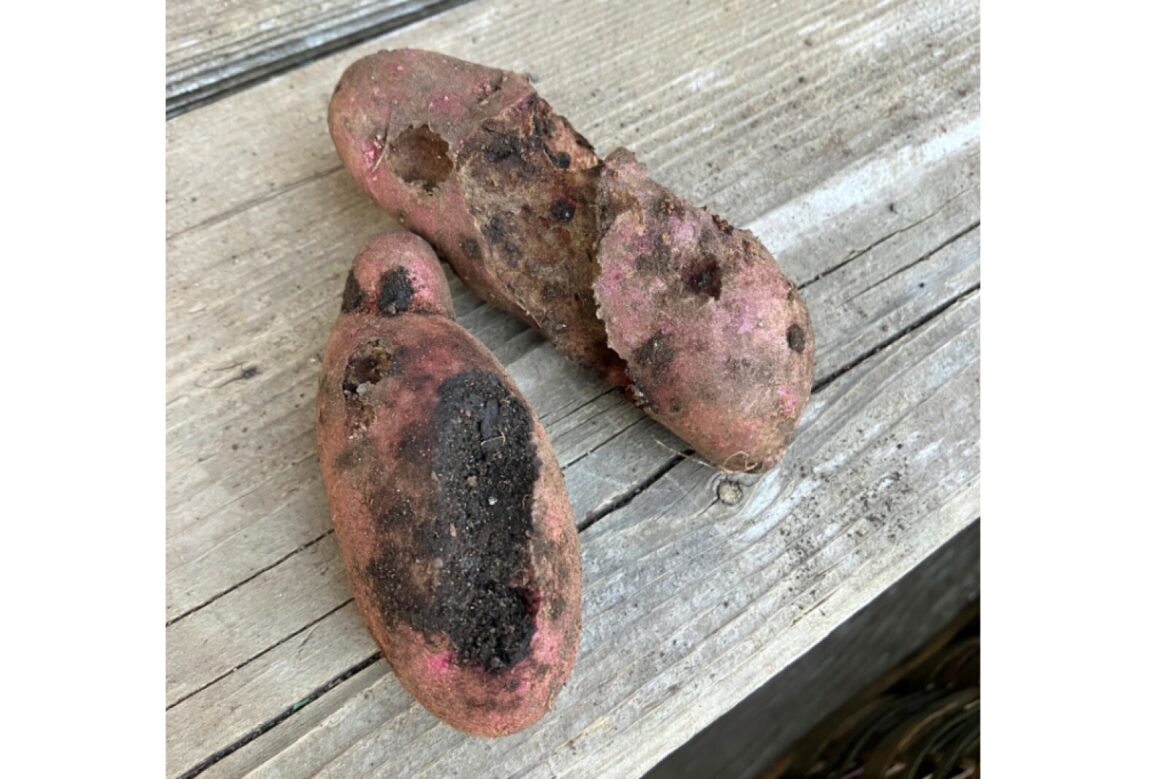Q: I have been harvesting my potatoes this week, and some of them have big chunks eaten away. They were underground, so I don’t see how this could be mice or chipmunks. Yesterday, I turned up a couple that were damaged and also dug up this very large grub. Is that who’s doing this? If so, how do I get rid of them, or at least keep them from coming back next year? I don’t want to spray pesticide. They can have a few potatoes if that’s my only option.

A: You have my sympathies. I look forward all summer to digging the potatoes, so I feel your pain that somebody else got to them first.
Some rodents tunnel underground and cause potato damage. Voles can be a problem. Mice can chew on potatoes near the surface.
But, as you said, rodents are probably not what’s causing the damage you’re seeing. Rodents leave behind clear tooth marks when they chew on potatoes. The smooth excavations and smaller, round holes you’ve got are more characteristic of grub damage.
Most gardeners probably turn up a grub now and then when digging in the garden. They’re pretty easy to identify. They’re soft and white, with six legs near the head, and they may curl into a “C” shape. They are the larval stage of beetles such as June bugs.
The adults lay their eggs on soil, manure or compost. When the larvae hatch, they spend years underground, eating roots and growing, before they finally pupate and become adult beetles.
White grubs can damage lawns if there are enough of them. They’ll also go after the roots of corn and, as you are seeing, they can chew holes in potatoes and sweet potatoes.
Usually, you won’t find enough white grubs in a home garden to do significant damage, but if their numbers are high, they can wipe out a crop. There are pesticides that commercial potato growers use, but you do have some other options in your garden:
First, don’t plant potatoes where you’ve recently removed grass to make a garden. Grass is a favorite habitat for white grubs.Second, don’t grow potatoes where you grew them last year. Rotate them with some other crop.Third, before planting, turn the soil over and remove any grubs you find. You can feed them to birds or squish them. If you find more than a few grubs, consider tilling the soil to kill others that you didn’t find. More than four grubs per square foot is a severe infestation.Finally, you may want to consider treating your soil with something called Btg (Bacillus thuringiensis galleriae). Btg is a bacterium that kills caterpillars and other larvae and will not harm humans, pets or adult pollinators such as bees.


Comments are closed.